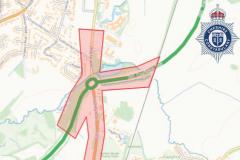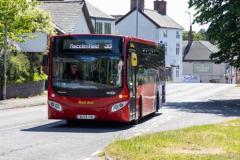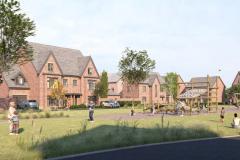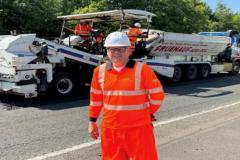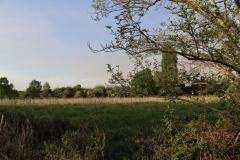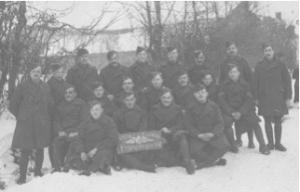
In this month the terrible struggle at Verdun continued. With the bitterest of the winter over, the Italians attacked the Austrians at the 5th battle of the Isonzo river (there were 12 in all) from the 9th to the 15th.
This was largely to distract the Central Powers from the Eastern Front and the forts along the river Meuse. As ever there was no clear victor. The British (including the 8th battalion Cheshires) were engaged elsewhere. Another attempt to relieve our besieged forces at Kut-al-Amarc in Mesopotamia was defeated. An attack was carried out at the St Eloi craters in the Ypres Salient on the 27th - by the 16th April the battle ended with the Germans in control of the battlefield as they had been at the start. Mercifully for our locality there were no fatalities reported. It was to be the last "thankful" month for our area for the rest of the Great War.
It may be appropriate therefore in this "lull before the storm" to honour the memory of another Wilmslow man who thankfully survived the conflict after playing a crucial role in our cause - James Downes. James was born in 1882 and lived in Lacey Green with his parents, James and Ann and 3 brothers (Arthur, Colin and Fred). His father was a gardener and James was a joiner with the well-known builder, Levi Brown. By 1911 he had married Martha from Wellington, Shropshire and he lived with her, his widowed father and 2 daughters, Annie and Hilda at Mount Pleasant cottage. By the time of his conscription in April 1917 he had 5 children. To help with the pressures on the domestic budget the girls were sent to live in Shropshire with farming relatives. Arthur, Albert and Frank stayed here.
It was not by chance that James joined the Royal Flying Corps as Aircraftsman Grade 1 trade (220652) as a joiner. Most of the Great War airplanes were made of wood trusses overlaid with canvas fabric and glued. Most propellers were made of laminated wood. When the planes caught fire it spelled certain death as the pilots were not allowed parachutes. James was based at St Omer. He and his comrades were called "riggers" and spent their time repairing damaged aircraft.
The German always had a qualitative edge in terms of aircraft until 1918. There were many aces on either side. Inheriting the mantle of the medieval knight, they were depicted as fighting a more cultured, elegant war than that grotesque nightmare being fought below. The Germans had Max Immelman, Oswald Boekke, Ernst Uder, Hermann Goerring and of course the Red Baron - von Richthofen. We had Albert Ball (the "baby faced assassin"), Mick Mannock, Billy Bishop and Eddie Rickenbacker.
The saying in the Great War was "there are old pilots and bold pilots, but never old and bold pilots". The great dogfighters mostly died in 1917 and 1918, battle fatigued, chancing their arm once too often and ignoring their own rules. We did not catch up with the Germans in quality planes until 1918, but sheer numbers not individuals gradually gained command of the air. The Great War saw rapid development in airplanes - stability, speed, safety, power, manoeuvrability. It was down to such stalwarts as James Downes that the grim pragmatism of attrition won the day.
At the end of the war James returned to his wife and children in Lacey Green where another son and daughter were born. In 1910 Alliot Verdon Roe had begun making aircraft in Manchester, producing a training plane for the RFC - the Avro biplane. When larger premises were needed in the 1920s the Company moved to Woodford and employed many local skilled joiners, including James Downes. James's granddaughter is Mavis Timson, well known in the local community and for many years a prominent member of Wilmslow Historical Society.
Jon Armstrong and Alan Cooper, including material provided by Mavis Timson. Wilmslow Historical Society.



